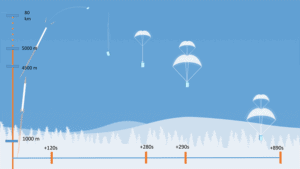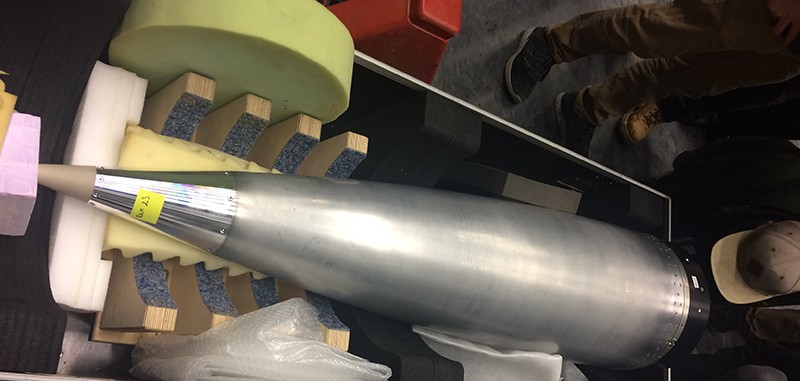The cool thing about studying in Kiruna, Sweden’s northernmost city, is that you may get to blast stuff into space on a rocket. The city is home to Esrange, a vast commercial and research rocket range, and the local technical university takes advantage of that with a menu of suitable courses, with names like “Spacecraft Instrument Project“.
If all goes according to plan, a team of students who met and began plotting their project in the spring of 2017 will have their equipment onboard a rocket that goes up in March next year. The stated project goal is to demonstrate “an engineering solution for the atmospheric reentry of a balloon probe”, but the ultimate inspiration is to explore the atmosphere of Venus according to student project lead Anna Nyhlén.
Aiming for Venus
“We knew we wanted to do a rocket project and one of us came up with the idea of making a balloon float, after they got inspiration from the VEGA missions,” she says.
(VEGA 1 & 2 were a pair of Soviet rockets launched in the 1980s to take a close look at Venus, and they did among other things eject instrumented balloons into the Venuvian atmosphere. After that, they went on to meet with Halley’s Comet.)
 The Kiruna rocket will ascend to approximately 80 km where the balloon and its electronics will be ejected. The challenge then is to achieve a controlled descent while taking measurements on the way down; the initial plan to have the balloon float at high altitude had to be abandoned in order to meet the project deadline.
The Kiruna rocket will ascend to approximately 80 km where the balloon and its electronics will be ejected. The challenge then is to achieve a controlled descent while taking measurements on the way down; the initial plan to have the balloon float at high altitude had to be abandoned in order to meet the project deadline.
As you have probably guessed by now, Percepio supports these students with Tracealyzer licenses for their whole team to help them analyse and debug their code.
“Software errors are pretty difficult to deal with once the computer is in orbit, as the data link usually is both limited in capacity and quite error-prone. Therefore, every method that eases the debugging process is invaluable for onboard software development. In particular, we intend to use Tracealyzer to verify that our scheduling calculations are correct and that each task can finish within its deadline,” says Nikolaus Huber, Head of Software.
Highly modular code with lots of tasks
The onboard computer is an Atmel SAM3X8E running FreeRTOS 8, with application software written mostly in C with some C++ library code. The system is highly modular with a lot of tasks interacting with each other. They’re still in an early development phase, so there are no traces to share yet.
Read more about the project: https://www.rexus-bespin.com/start
All about the research rocket: http://rexusbexus.net/rexus/
If you are studying or teaching embedded development, you too may be able to use Tracealyzer for free. You are welcome to check out our Academic Licenses (scroll to bottom of page).

